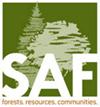巴西东部亚马逊地区人工林树木空心现象的评价
IF 1.5
4区 农林科学
Q2 FORESTRY
引用次数: 0
摘要
本研究提出在亚马逊地区的管理森林中产生与树和物种水平上的空洞丰度和结构特征相关的信息。使用了一个数据库,该数据库由来自38个物种的29,899棵树组成,这些树在2008年至2017年期间在巴西帕尔本文章由计算机程序翻译,如有差异,请以英文原文为准。
Evaluation of the Occurrence of Hollows in Trees in Managed Forest in the Eastern Brazilian Amazon
This study proposed to generate information related to the abundance and the structural characteristics of hollows at the tree and species levels in an area of managed forest in the Amazon. A database was used that was composed of 29,899 trees from thirty-eight species that were inventoried, harvested, and measured in ten annual production units that were managed between 2008 and 2017 in the Tapajós National Forest, state of Pará, Brazil. The data was tabulated and reported in absolute and percentage values. Contingency tables were created to identify patterns of occurrence of hollows in commercial stems. A total of 24% of the harvested trees had hollows in at least one section of the commercial stem, and species had different propensities for hollow occurrence. It was found that the larger the tree diameter the greater the possibility for occurrence of hollows, and these hollows were proportionally larger. Most of the hollows in harvested trees were small. Patterns of occurrence in commercial stem hollows were observed, and these were dependent on tree species and size. Most trees had hollows distributed along the entire stem or only at the base of the stem.
Study Implications: The presence of hollows in managed native forest trees in the Amazon depends on the species, and trees with larger diameters have a greater probability of having hollows. Furthermore, trees with larger diameters have hollows that have larger diameters, lengths, and volumes. Commercial trees have different patterns of hollows along the stem, and these patterns are dependent on tree species and size. The results of this study will contribute to management of trees with hollows in the Amazon Forest as well as to serve as a base for future studies related to this theme.
求助全文
通过发布文献求助,成功后即可免费获取论文全文。
去求助
来源期刊

Forest Science
农林科学-林学
CiteScore
2.80
自引率
7.10%
发文量
45
审稿时长
3 months
期刊介绍:
Forest Science is a peer-reviewed journal publishing fundamental and applied research that explores all aspects of natural and social sciences as they apply to the function and management of the forested ecosystems of the world. Topics include silviculture, forest management, biometrics, economics, entomology & pathology, fire & fuels management, forest ecology, genetics & tree improvement, geospatial technologies, harvesting & utilization, landscape ecology, operations research, forest policy, physiology, recreation, social sciences, soils & hydrology, and wildlife management.
Forest Science is published bimonthly in February, April, June, August, October, and December.
 求助内容:
求助内容: 应助结果提醒方式:
应助结果提醒方式:


